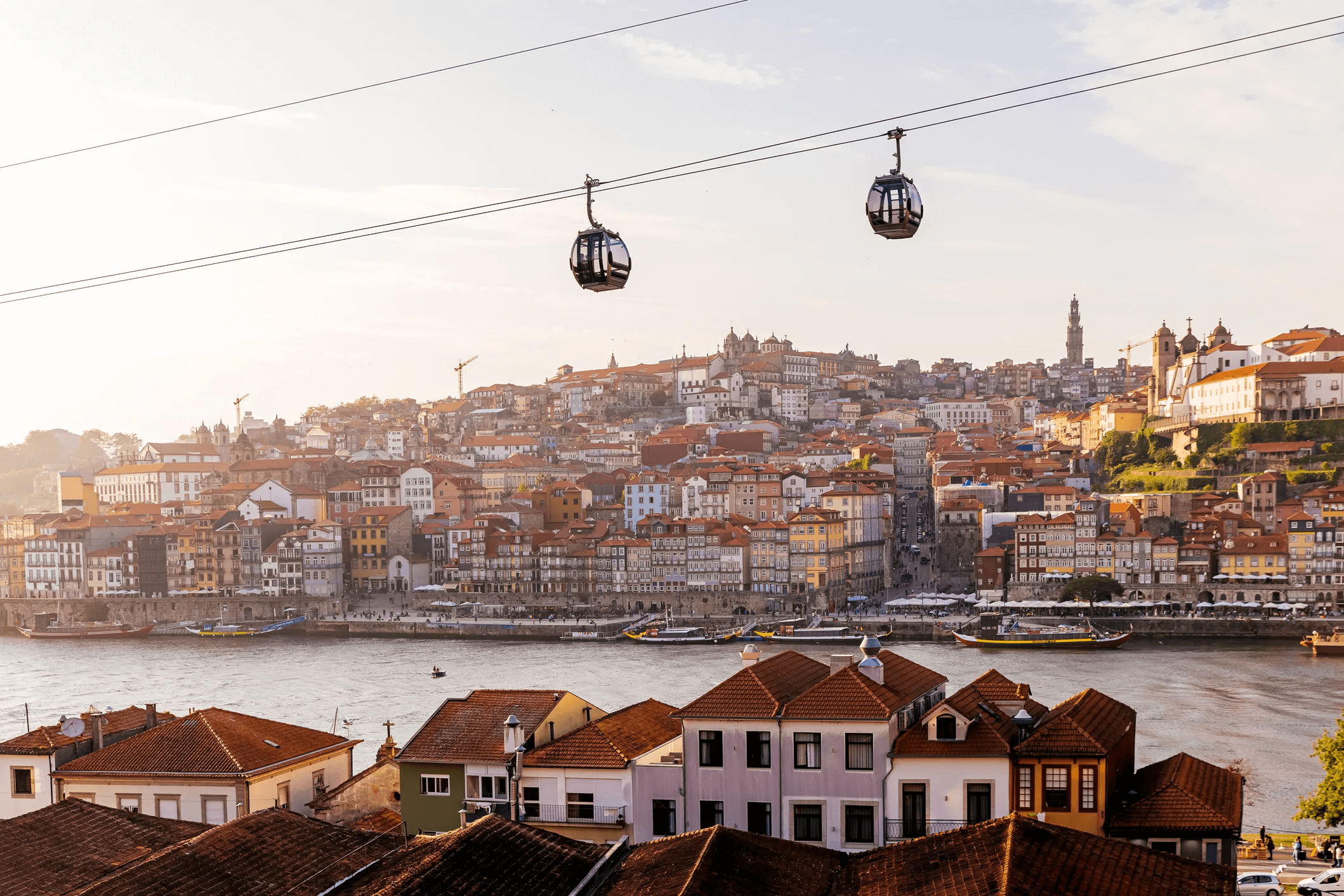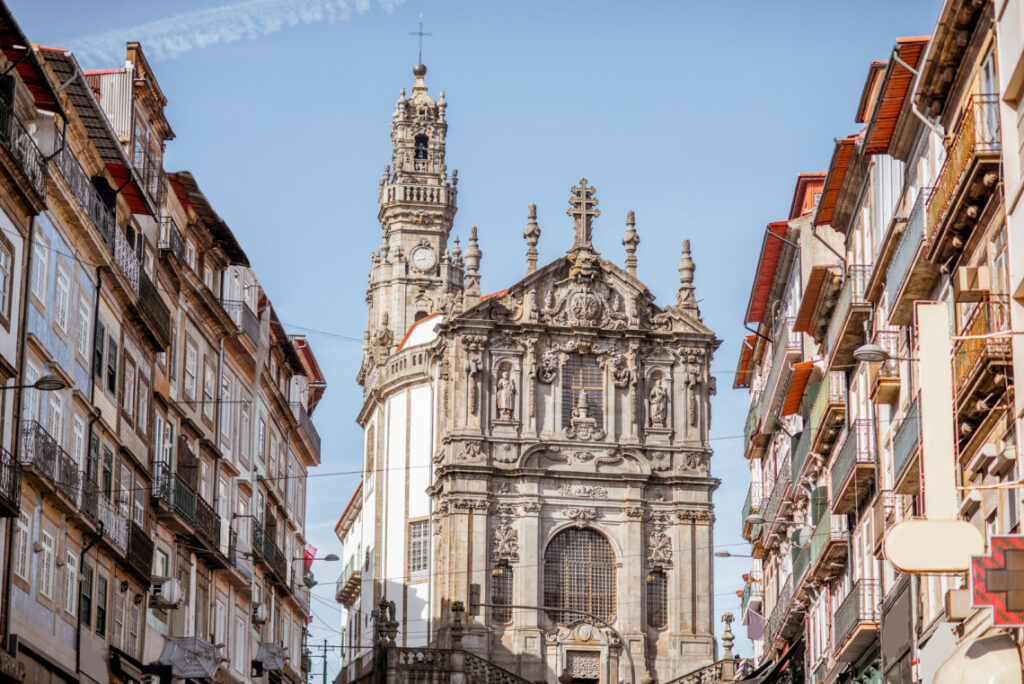Have you ever wondered why Porto is often called the “City of Baroque”? If you’ve strolled through the cobblestone streets of this Portuguese gem, you’ve likely been captivated by its stunning, intricate architecture. Porto’s Baroque architecture is more than just buildings; it’s a testament to a time when artistry and opulence reigned supreme. Let’s delve into the golden age that shaped Porto into the breathtaking city it is today.
The Birth of Baroque in Porto
Baroque architecture in Porto didn’t happen overnight. It was the result of a cultural and artistic revolution in the late 17th and early 18th centuries that swept across Europe. With its roots in Italy, Baroque architecture was all about grandeur, drama, and detail. In Porto, these elements were embraced with open arms, transforming the cityscape into a canvas of curvaceous, elaborate designs that draw the eye and inspire the soul. The city’s wealth from the burgeoning wine trade funded much of this architectural evolution, allowing for the creation of stunning churches, grand buildings, and intricate facades that remain today.
One of the most striking aspects of Porto’s Baroque architecture is its ability to combine functionality with form. These buildings weren’t just constructed to be admired; they were designed to be used and lived in, which is a testament to the ingenuity of the architects of the time. The use of gold leaf, intricate stone carvings, and grandiose interiors were all hallmarks of this style, bringing a touch of the divine to the everyday lives of Porto’s citizens. Walking through Porto, one can’t help but feel a connection to this rich history, as every corner offers a new glimpse into the past.
Iconic Baroque Landmarks
The Church of São Francisco is a shining example of Porto’s Baroque brilliance. Known for its lavish interior adorned with gold, this church is a must-see for anyone exploring Porto baroque architecture. The intricate wood carvings and the sheer opulence of the altar are awe-inspiring, inviting visitors to step back in time and experience the grandeur of the Baroque era firsthand. The church’s exterior may be austere in comparison, but once inside, the contrast is a revelation, showcasing the Portuguese mastery of this architectural style.
Another iconic landmark is the Clérigos Tower, which offers panoramic views of the city. Designed by the Italian architect Nicolau Nasoni, this tower is a masterpiece of Baroque design. Its spiral staircase and the church it adjoins serve as reminders of the influence of Baroque architecture in Porto. The Clérigos Tower stands as a symbol of the city, its silhouette a constant on the Porto skyline, inviting both residents and tourists to explore its history and beauty.
The Influence of Nicolau Nasoni
Nicolau Nasoni, an Italian architect, played a pivotal role in shaping Porto’s Baroque architecture. His influence is evident throughout the city, with his most famous work being the Clérigos Tower and Church. Nasoni’s style was marked by boldness and an ability to infuse his buildings with a sense of movement and drama, characteristics that defined Baroque architecture. His work in Porto left an indelible mark, blending Italian flair with Portuguese tradition to create something truly unique.
Aside from the Clérigos Tower, Nasoni also contributed to the construction of the Episcopal Palace of Porto. This grand building is another showcase of Baroque grandeur, with its lavish interiors and commanding presence overlooking the Douro River. Nasoni’s legacy in Porto is one of innovation and splendor, and his works continue to be celebrated as some of the finest examples of Baroque architecture in the city.
The Role of Religion in Baroque Architecture
Religion played a significant role in the development of Baroque architecture in Porto. The Catholic Church was a major patron of the arts during this period, commissioning many of the city’s most famous Baroque structures. Churches and religious buildings were often designed to inspire awe and reverence, with their grandiose interiors serving as a testament to the glory of God and the wealth of the church. This fusion of faith and artistry is evident in every gilded altarpiece and detailed fresco, creating spaces that were as much about spiritual elevation as they were about architectural magnificence.
The Church of Santa Clara is another fine example of religious Baroque architecture in Porto. Its interior is a feast for the eyes, with walls covered in gold leaf and intricate woodwork that speaks to the skill and dedication of the craftsmen of the time. The church’s design reflects the Baroque ideals of movement and emotion, drawing worshippers and visitors alike into a space that feels both sacred and splendid.
The Decorative Arts in Baroque Porto
Beyond architecture, the Baroque period in Porto was also a time of flourishing decorative arts. The interiors of Baroque buildings were often adorned with elaborate decorations, including ornate woodwork, gilded sculptures, and detailed frescoes. These elements were not just embellishments; they were integral to the Baroque experience, transforming buildings into immersive works of art. The use of azulejos, or traditional Portuguese tiles, was particularly prominent, adding color and pattern to walls and floors in a uniquely Iberian twist on the Baroque style.
The azulejos in Porto’s São Bento Railway Station offer a glimpse into the decorative brilliance of the Baroque era. While the station itself was built later, the tilework reflects traditional Baroque themes and techniques, depicting historical scenes with dramatic flair. This blend of art and architecture is a hallmark of the Baroque period, illustrating how every surface could be transformed into a canvas for storytelling and expression.
The Baroque Cityscape
Porto’s cityscape is a testament to its Baroque past. Walking through the neighborhoods of Ribeira and Miragaia, one can see how the city’s architecture was shaped by the Baroque style. The narrow streets and tall, ornate buildings create a sense of intimacy and grandeur, inviting exploration and discovery. Even the simplest homes often feature Baroque elements, such as intricate ironwork or decorative plaster, showcasing the widespread influence of this architectural movement.
The Baroque influence extends beyond individual buildings to the layout of the city itself. Porto’s urban planning during this period reflected the Baroque ideals of harmony and balance, with streets designed to frame views of the city’s landmarks and natural beauty. This thoughtful integration of architecture and environment is part of what makes Porto’s Baroque heritage so enduring and beloved by those who visit and live in the city.

Craftsmanship in Baroque Architecture
The craftsmanship of Porto’s Baroque architecture is a marvel in itself. The level of detail and precision required to create the intricate carvings, gilded surfaces, and elaborate facades of Baroque buildings is extraordinary. Highly skilled artisans and craftsmen dedicated themselves to their work, transforming stone and wood into works of art that have stood the test of time. Their legacy is evident in every ornate cornice and sculpted cherub, a testament to the artistry and dedication that defined the Baroque era.
The Church of Santa Clara is a prime example of this craftsmanship. Its interior is a showcase of Baroque artistry, with every surface adorned with intricate woodwork and gold leaf. The church’s craftsmen created a space that feels both majestic and intimate, a reflection of their skill and the Baroque ideal of blending grandeur with emotion.
The Legacy of Porto’s Baroque Era
Porto’s Baroque architecture continues to influence the city today. Modern architects and designers draw inspiration from the Baroque period, incorporating its elements into contemporary designs. The city’s commitment to preserving its Baroque heritage is evident in the restoration and conservation efforts that ensure these historic buildings remain a vibrant part of Porto’s cultural landscape. This ongoing dialogue between past and present keeps the spirit of the Baroque alive, inviting new generations to appreciate its beauty and significance.
The enduring legacy of Porto’s Baroque era is also celebrated through festivals and cultural events that highlight the city’s rich history and artistic achievements. These events offer visitors and locals alike the opportunity to experience the grandeur and creativity of the Baroque period, fostering a deeper appreciation for Porto’s architectural heritage.
Porto’s Baroque Beyond Architecture
While architecture is the most visible expression of the Baroque period in Porto, its influence extended to other areas of culture as well. The Baroque era saw a flourishing of music, art, and literature, all of which contributed to the vibrant cultural tapestry of Porto. The city’s music halls and theaters became centers of artistic expression, hosting performances that captured the drama and emotion of the Baroque style.
Art from the Baroque period often featured dramatic compositions and rich colors, reflecting the same principles of movement and emotion found in architecture. This artistic synergy created a cohesive cultural environment where music, art, and architecture complemented each other, enhancing the overall experience of the Baroque in Porto.
Visiting Porto’s Baroque Treasures
For those planning to visit Porto, exploring its Baroque architecture is a must. From the grand churches to the intimate details of residential buildings, the city offers a wealth of Baroque treasures to discover. Walking tours are a great way to experience the architecture up close, with knowledgeable guides who can provide insight into the history and significance of each landmark.
Don’t miss the opportunity to step inside these historic buildings, where the interiors often reveal the true extent of Baroque opulence. Whether you’re gazing up at a gilded ceiling or admiring the intricate woodwork of an altar, each visit offers a deeper understanding of the craftsmanship and artistry that define Porto’s Baroque architecture.
The Future of Porto’s Baroque Heritage
Looking ahead, the future of Porto’s Baroque heritage is bright. Ongoing preservation efforts ensure that these architectural treasures remain an integral part of the city’s identity. As Porto continues to grow and evolve, its commitment to preserving its Baroque past serves as a reminder of the city’s rich history and cultural significance. This dedication to heritage ensures that future generations will have the opportunity to experience and appreciate the beauty and grandeur of Porto’s Baroque architecture.
The integration of modern technology and conservation techniques also promises to enhance the preservation and accessibility of Porto’s Baroque buildings. By embracing both innovation and tradition, Porto can continue to celebrate its Baroque legacy while welcoming new developments and ideas.
Conclusion
Porto’s Baroque architecture is a testament to a time of artistic brilliance and cultural flourishing. The city’s stunning buildings and rich history invite exploration and appreciation, offering a glimpse into a world where art and architecture were intertwined in the pursuit of beauty and grandeur. Whether you’re a history enthusiast, an architecture aficionado, or simply a curious traveler, Porto’s Baroque treasures promise to captivate and inspire, leaving you with a deeper understanding of this remarkable city and its decorative golden age.

Recent Posts
15 Floor Plan Graphic Styles That Will Elevate Your Presentation Game
The Role of Shadows in Architectural Storytelling
When Furniture Becomes Architecture: Blurring the Line